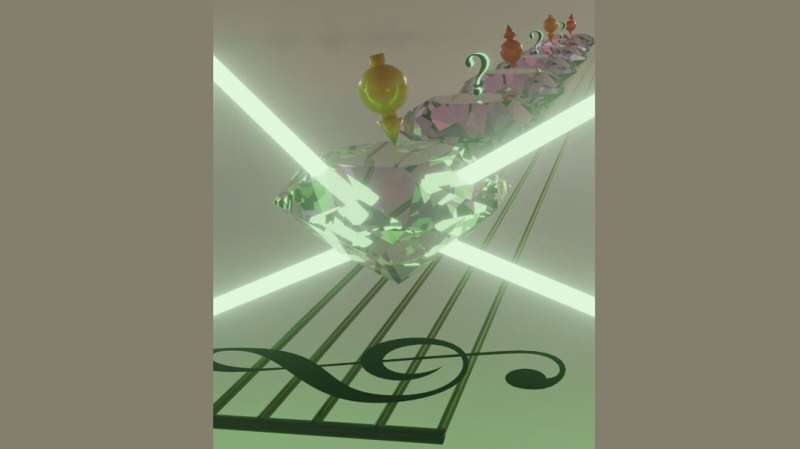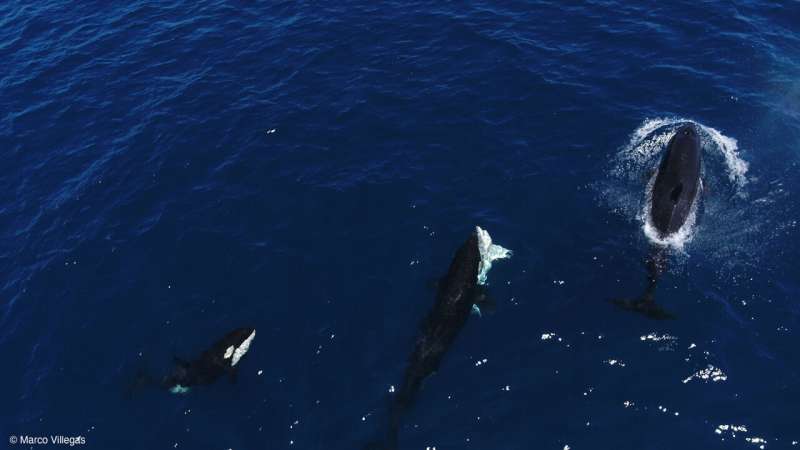A team of researchers from the University of California, Berkeley, has made a significant breakthrough in the field of physics by experimentally observing a new phase of matter known as a time rondeau crystal. This discovery, published in the journal Nature Physics on November 10, 2025, presents a unique state where long-range temporal order coexists with short-term disorder.
The time rondeau crystal derives its name from the musical form characterized by a recurring theme interspersed with variations, reminiscent of works like Mozart’s Rondo alla Turca. In this new phase, the crystal demonstrates perfectly periodic behavior at specific measurement times while exhibiting controllable random fluctuations in between. Co-author Leo Moon, a Ph.D. student in Applied Science and Technology at UC Berkeley, explained that the research highlights the interplay of order and variation found in both art and nature.
This concept of duality extends to everyday materials. For instance, ice showcases a crystalline structure where oxygen atoms are arranged in a lattice, while hydrogen nuclei remain disordered. Previously, time crystals—first identified over the last decade—defied conventional understanding by breaking time-translation symmetry. The rondeau crystal is notable for combining stroboscopic order with controllable randomness, marking a novel development in the field.
Creating a New Phase of Matter
To create this new phase, researchers utilized carbon-13 nuclear spins in diamond as their quantum simulator. The experimental setup involved randomly positioned nuclear spins interacting through long-range dipole-dipole couplings at room temperature. Initially, the team hyperpolarized the carbon-13 nuclear spins, enhancing their polarization nearly 1,000-fold above thermal equilibrium using nitrogen-vacancy (NV) centers—defects within the diamond lattice.
The hyperpolarization process, which took approximately 60 seconds, allowed for a robust signal tracking over extended durations. Following this, the researchers employed intricate microwave pulse sequences, integrating protective “spin-locking” pulses with polarization-flipping pulses. This meticulous approach generated the desired rondeau order.
Moon noted the advantages of using diamond as a medium, citing its stability, strong interactions, and minimal chemical reactivity. The diamond lattice provides a conducive environment for exploring these exotic temporal phases due to its robustness against external noise and temperature fluctuations.
The researchers implemented a novel control system termed random multipolar drives (RMD), where randomness is systematically managed. During the drive cycle, nuclear spins flipped their polarization at regular intervals, displaying the periodic behavior typical of time crystals, while also showcasing unpredictable fluctuations between measurements. This coexistence of order and disorder defines the essence of rondeau order.
Observations and Implications
The team successfully observed the rondeau order for more than 170 periods, equating to over four seconds. Their findings revealed a distinct signature in the frequency spectrum, differing from conventional discrete time crystals. Instead of a singular sharp peak, the time rondeau crystal exhibited a continuous distribution, further confirming the balance of temporal order and disorder.
Moon emphasized that this discovery illustrates how order and disorder can coexist harmoniously within a driven quantum system. The researchers gained control over the system’s behavior, mapping an extensive phase diagram that indicates stability under varying conditions. Additionally, they discovered that the temporal disorder could be utilized to encode information, demonstrating the potential for future applications in quantum sensors and memory devices.
While practical applications are still in the exploratory phase, the ability to store information within temporal disorder offers intriguing possibilities. Moon likened this concept to the relationship between water and ice, where ordered structures carry essential information despite underlying randomness.
Looking ahead, the team is investigating alternative materials to expand this research beyond diamond. They are considering pentacene-doped molecular crystals, which could enhance sensitivity through hydrogen-1 nuclear spins. The implications of leveraging tunable disorder in these systems may lead to the development of advanced quantum technologies.
This groundbreaking study not only broadens the understanding of non-equilibrium temporal order but also positions the research team at the forefront of innovative developments in quantum mechanics. The findings underscore the potential for future breakthroughs that may redefine how we perceive and utilize quantum systems.







